by Editor | Feb 28, 2011 | Luxury Travel
Article and photos by Josette King
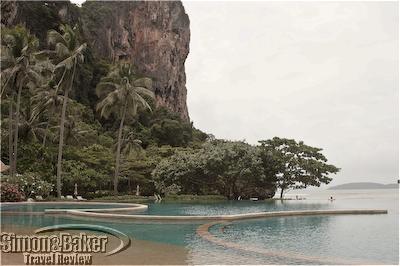
The striking Rayavadee infinity pool overlooked Railay Beach
Some 35 years ago, I fell in love with a place where I had never been. It was a remote paradise concealed among towering jungle-covered limestone cliffs in a virtually unchartered corner of the Andaman Sea, at the tip of the Malay Peninsula; and the secret hideout of arch-villain Scaramanga, The Man with the Golden Gun. As I recently set out to finally visit the eye-popping shores of Southwest Thailand, I reminded myself that a lot had happened during the intervening decades. James Bond has moved on, and the area is now on the list of every savvy beach lover traveling around Southeast Asia. And I have come to place a high value on creature comforts, even as I set out to explore far-flung corners of the planet. However, the high cliffs jutting out of the turquoise sea, with at their base deep, jagged grottoes shaped by millennia of waves and winds, are still achingly beautiful, all the more so for being admired in real time. Best of all, in their midst, there are now a few rare secluded luxury retreats where these unique geological wonders can be enjoyed without having to forsake any contemporary conveniences.

Phranang Beach was renowned for its spectacular limestone cliffs
Rayavadee was just such a place. Set among the soaring cliffs of the Phranang Peninsula at the edge of the Krabi Marine National Park, the five-star property was accessible only by sea. Although the peninsula is actually connected to the mainland, it is effectively cut off from the rest of Krabi by limestone headlands and steep jungle valleys. The short ride from the Krabi pier on Rayavadee’s private speedboat was an exhilarating opportunity to take a first glance at these stunning surroundings. The resort itself, nestled in lush tropical gardens and coconut groves dwarfed by the cliffs, was barely noticeable from the water. Once on shore, however, it revealed itself as a sophisticated retreat of contemporary circular two-story guest pavilions scattered throughout a vast verdant haven.
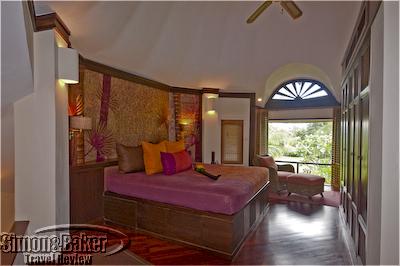
The bedroom was a colorful contemporary retreat
A network of winding brick-paved footpaths crisscrossed the property, which was also encircled by an unobtrusive road for the quiet electric carts always on hand to ferry me around when I was not in a walking mood. I soon discovered that at Rayavadee all roads led to the beach; two beaches actually, Railay and Phranang, with creamy sands and warm, shallow waters ideal for swimming; both among the most sought-after on the peninsula. As is most often the case in Thailand, these beaches were public, easily accessible to day-visitors via commercial longtail boats, and therefore often busy. However, the property’s boundaries extended to the edge of the beaches, each with a welcoming waterfront restaurant, all the customary beachside amenities and complimentary top quality water sports equipment for the exclusive use the guests.
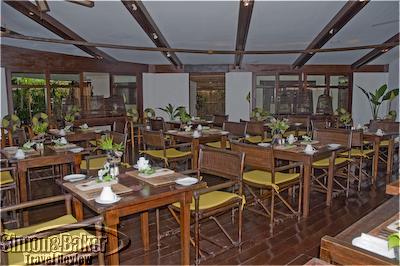
Raya was Rayavadee’s main dining room
The weather was unseasonably stormy at the time of my visit, with occasional rain squalls disturbing the vaunted crystalline waters so that they were not conducive to snorkeling. I often opted for a dip in the pool instead, a vast free-form infinity-edge basin that seemed to lose itself into the sea, while its far end reached out to the nearby cliff. This was indeed the Andaman seashore I had fantasized about all these years ago, with all the luxury I could wish for.
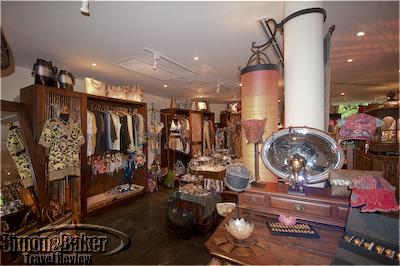
Gift Boutique at Rayavadee
The friendly, polished staff was attentive to my every need and wish. But when I was in the mood for even more pampering, Rayavadee Spa offered an extensive range of massages and salon treatments that combined Thai and international practices that could be adjusted to my specific needs, in a deliciously relaxing contemporary Southeast Asian environment. Then there was the elegant high tea served each afternoon in the main lounge, visibly popular among the guests. Things have indeed changed in this remote corner of the Andaman Sea over the past three decades, but I expect James Bond would approve. Visit the Simon & Baker Travel Review to read more about my visit to Thailand and my stay at Rayavadee and the Phranang Peninsula.
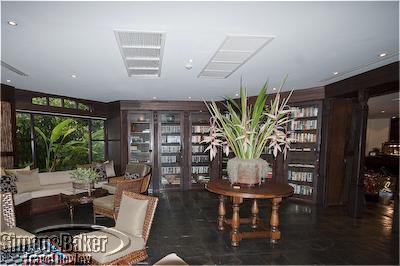
The library
by Editor | Feb 21, 2011 | Luxury Travel
Article and photos by Josette King

Santhiya’s private speedboat
Koh Phangan, (or simply Phangan in local parlance) is a remote island in the southeastern part of the Gulf of Thailand, 9.5 miles (15 kilometers) north of Koh Samui, its larger and more established sister. Phangan has been popular for several decades among world-trekking backpackers who have been known to congregate monthly by the tens of thousand at the southern tip of the island on Haad Rin beach for the Full Moon Party. For me, however, the island’s magic unfolded farther north, in the secluded northeastern part of the island, where the crescent-shaped bay of Thong Nai Pan is home to the stunning Santhiya Resort and Spa.
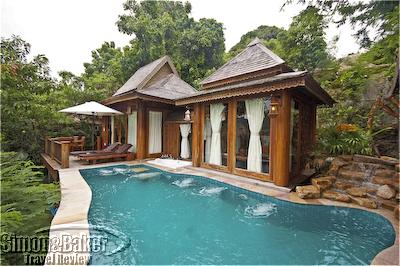
My private plunge pool featured a waterfall
It was a 40 minute ride from Koh Samui on Santhiya’s private speedboat. The latter half of the journey was along Phangan’s pristine coastline of steep hills covered with dense forests rising from the rocky shore. Off and on, strips of creamy sand appeared between the rocks, dotted with a few thatched huts shaded by coconut palm trees. Soon we were approaching a discrete wooden pier at the far edge of Thong Nai Pan, considered one of the loveliest of the island’s beaches. Santhiya rose from the shore, a hillside of exuberant tropical gardens punctuated with peaked roofs characteristic of traditional Thai architecture. Above its gently curving private beach, a tall waterfall splashed into a vast multi-level infinity pool, further enhancing the serenity of the landscape.
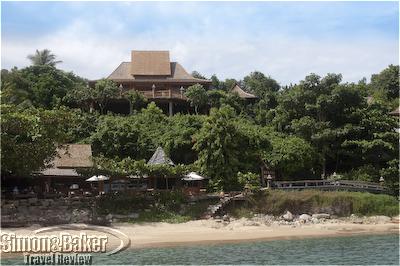
Santhiya’s private beach
King Rama V, who reigned over Thailand for over 40 years in the late 19th and early 20th centuries and is one of the Kingdom’s most revered rulers, is known to have been especially fond of the island, which he visited repeatedly. From the moment the boat prepared to dock to the deep rippling sound of a gong announcing our arrival, I felt I was stepping back into the romance of that bygone era. The property was inspired by the architectural style associated with the monarch, of airy teakwood pavilions under soaring peaked roofs held by tall polished wood pillars, their clean lines enhanced by a profusion of elaborate, lace-like woodcarvings. They also featured inviting terraces with commanding views of the bay; as did my ocean view villa with its private whirlpool plunge pool nestled within the verdant hillside vegetation.
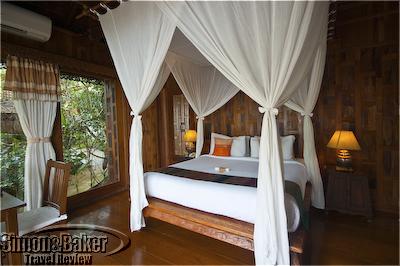
My bed was swathed in white netting
But at Santhiya, timeless elegance and grace were not limited to the surroundings. Every member of the remarkably attentive staff seemed intent on being an ambassador of the vaunted Thai hospitality. And the resort offered a number of opportunities for guests to appreciate traditional lifestyle arts. Thai evenings at Chantara, the property’s main restaurant, were a chance to sample an extensive array of lesser known Thai culinary specialties, and also to listen to and watch regional music and dances performed by Santhiya’s own dance group. I also especially enjoyed the intimate Ayurvana Spa for one of the best combinations of traditional Thai and international treatments I have enjoyed anywhere.
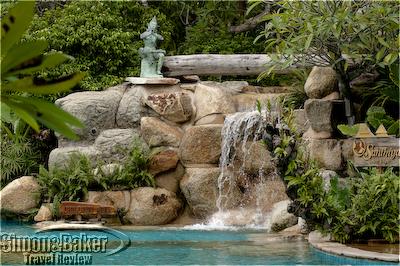
The children’s pool
And as luck would have it, I happened to be at Santhiya on the full moon. The shimmering waters of the Gulf of Siam (as the Gulf of Thailand was once known) were indeed lovely under the pale golden moon, as was the music drifting from the village across the bay; all the more so that I could enjoy it all from the luxurious privacy of my personal terrace. Visit the Simon & Baker Travel Review to read more about Thailand and my stay at the romantic Santhiya Resort and Spa.
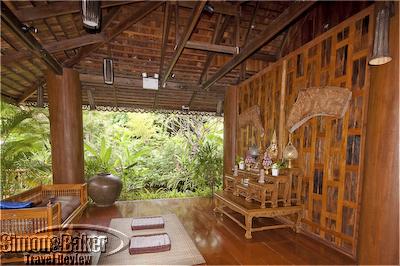
Buddhist shrine
by Editor | Feb 14, 2011 | Luxury Travel
By Laura Scheiber
Photos by Matthew Harris

I don’t know why I find it so much more enjoyable to read from my Kindle than from a print book, but I do. I resisted. I really did, advocating for the joys of a good ol’ fashioned book. And then everything changed when I got a Kindle as a Christmas present. Perhaps I am still in the honeymoon stage, but I don’t foresee going back to traditional books any time soon.
The Kindle, commonly referred to an e-reader or e-book, offers a portable digital replacement for print books. The screen displays one page at a time and it looks so authentic that I sometimes forget that it is not a paperback. Contrary to print books, there are buttons on the left and right-hand sides of the Kindle, allowing the reader to turn the page at the click of a button.
In general I have found the interface to be very intuitive. The menu button directs you to the Kindle store among other options, while the home button lists your personal library. The Kindle store has over 800,000 books to choose from. I like that you can sample a chapter of a book before purchasing it. This e-reader is set up so that whenever I purchase a new book, it is charged directly out of my Amazon account. My Kindle has the capacity to hold over 3,000 books and it takes approximately 60 seconds to download one book.

So far I have been impressed with the battery life. I tend to charge my Kindle about every three weeks. Battery life varies depending on the reader because electricity is only needed when turning pages (assuming the wireless feature is turned off). Since the battery life of the Kindle lasts longer with the wireless feature turned off, I only connect to the Web when shopping for new books. It takes three hours to fully charge my Kindle.
For anyone like me who loves to travel, the greatest advantage of this e-reader is having access to a bunch of books without the burden of carrying them.
My Kindle (with leather cover) weighs roughly the same as a 300-page paperback. It fits easily into a carry-on bag or purse. The dimensions measure at 7.5″ x 4.8″ x 0.335” with a 6-inch diagonal. It is about as thick as a pencil and as wide and long as a large postcard. Users who have a travel companion who also has a Kindle, can sync their accounts so that both parties have access to the same books. I foresee my Kindle being particularly useful when traveling to international places where books in English are hard to come by.
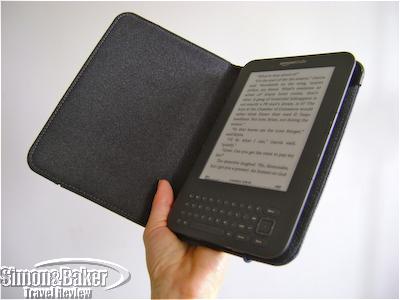
While there is an English dictionary installed for free, there are no translation tools. I hope this is a feature they will add in the future because it would be useful while traveling overseas. One downside of the Kindle when traveling by plane is that all electronic devices must be turned off during take-off and landing, including e-readers.
There are two options of the latest 6-inch Kindle model. The Kindle 3G + Wi-Fi costs $189 and offers wireless Internet coverage in over 100 countries. I opted for the $139 model which does not have this international wireless feature. However, I download books at home prior to traveling and this has worked out very well.
I like the Kindle lighted leather cover, which is sold separately at $59.99. It not only protects my e-reader, but it also has a pullout light in the upper-right hand corner. I love this feature at nighttime because I don’t have to get out of bed to turn off the lights when it is time to sleep.
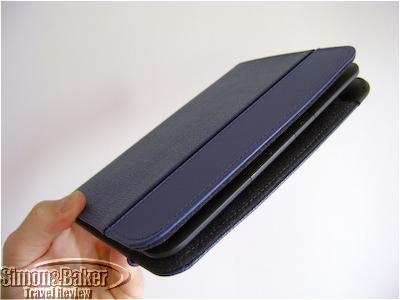
While overall the device does a great job of imitating a print book, I initially found it odd that the Kindle does not display page numbers. Instead it exhibits how far, percentage-wise, I am into the book. This alternative to page numbers has to do with the fact that it is possible to change the font size. As such, it is impossible to list page numbers that consistently reflect the printed version. My only real gripe about the Kindle is that every once in awhile it loses my page number and I have to click through the chapters to find where I had previously stopped reading. Luckily this has only happened twice.
All in all, I love my Kindle Wi-Fi 6” and would absolutely recommend it to others, especially those who love to read while traveling.
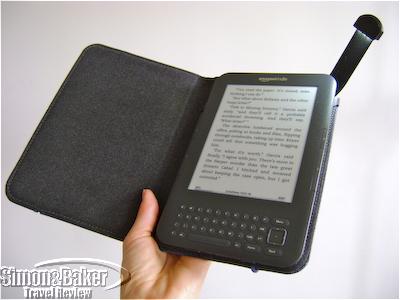
by Editor | Feb 7, 2011 | Luxury Travel
Article and photos by Josette King
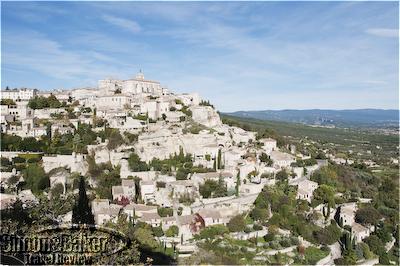
Gordes is a historic hilltop village of the Luberon
On a drive through the mountainous back roads of Provence, France a few years ago, I stopped at the top of a steep hill, mesmerized by the scenery. On the other side of the precipitous valley, clinging to a sun baked peak overlooking the glorious vistas of the Luberon, was one of the most stunning French villages perchés (hilltop villages) I had ever seen. It started at the very top of the precipice with a rambling fortified castle and church. From there, pale limestone homes and terraced gardens planted with silvery olive trees cascaded all the way to the valley floor. “Gordes,” the road sign announced, its arrow pointing in the opposite direction from the one where I was expected. I only had time to snap a few pictures before driving off with the promise that I would return, someday.
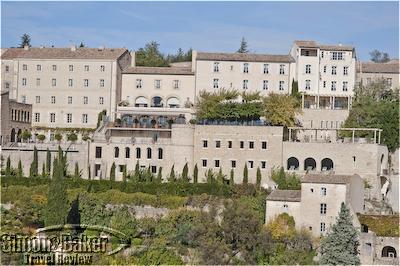
The property is perched above a steep valley
I did return recently, with Gordes as my destination this time, and La Bastide de Gordes and Spa my home. From there, I enjoyed exploring such local jewels as the remote Abbaye de Sénanque, a medieval Cistercian monastery built nine hundred years ago and still active today; and the apricot-colored village of Rousillon, surrounded by the brilliant red quarries of one of the largest ocher deposits in the world, both a mere 15 minutes away. So was the intriguing Village de Bories, a settlement of dry-stone habitations including sheep pens, bread ovens and wine vats dating back to the Bronze Age.
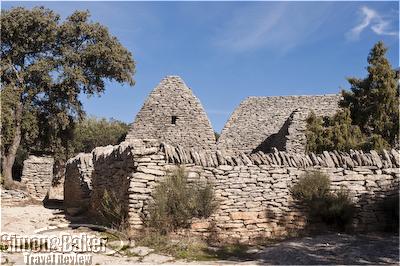
Village de Bories

Abbaye de Senanques
But best of all, there was La Bastide de Gordes itself. At the time of my hurried glimpse from the opposite side of the valley, I had mistaken it for a lovely country manor with its cloistered terraces and hanging-garden swimming pool. I loved discovering it now as a luxurious boutique hotel with a warm family-like atmosphere, peerless views of the hills of the Luberon and the Alpilles, a superb restaurant and a wonderful Sisley Spa (one of only three in France). Once again, I left with the promise that I would return, soon I hope. Visit the Simon & Baker Travel Review to read more about my visit to La Bastide de Gordes.




























